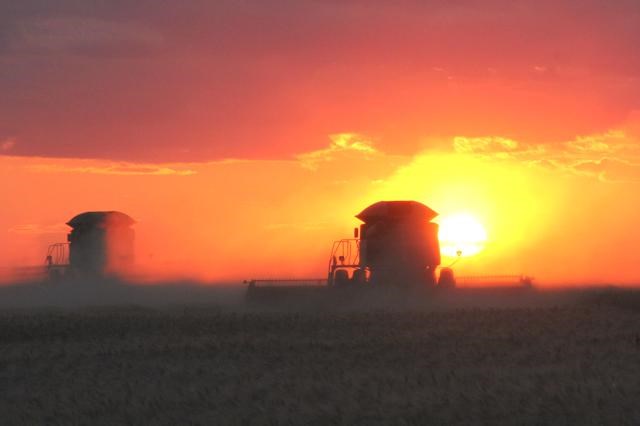Rain showers the week of September 12 delayed harvest for some producers, but most were back in the field within a few days. Saskatchewan Agriculture reports for the week ending September 18 that 75 per cent of the crop is now combined in the province and 16 per cent is swathed or ready to straight-cut.
This figure makes an increase from 65 per cent last week, which is also well ahead of the five-year average of 58 per cent and ten-year average of 57 per cent for this time of year. For this week a year ago, a dry and windy week for most of the province allowed for significant progress as 60 per cent of the crop was in the bin. Scattered showers delayed some areas but producers were back in the field within days. However, in 2016 crop quality remained low due to disease and issues such as bleaching, staining and sprouting.
The 2017 harvest is most advanced in the southwestern region where 89 per cent of the crop is now combined. The southeastern region has 86 per cent combined, the west-central region 74 per cent and the east-central region 72 per cent. The northeastern region has 53 per cent combined, while the northwestern region has 46 per cent combined. While many producers have wrapped up harvest operations, many more will need weather conditions to improve so that crops can dry down sufficiently for harvest to continue.
Provincially by crops, 100 of fall rye, 99 per cent of winter wheat and lentils, 97 per cent of field peas, 88 per cent of mustard, 87 per cent of the durum, 83 per cent of the chickpeas and barley, 76 per cent of the spring wheat, 65 per cent of the oats, 64 per cent canola, 58 per cent canaryseed and 33 per cent of the flax have now been combined, while 30 per cent of canola is swathed or ready to straight-cut. The soybean harvest is only getting underway with 12 per cent in the bin.
After more than a month of little to no rainfall, most areas of the province received precipitation between trace amounts to 36 mm in the Carnduff area. Additional rainfall earlier this week was welcomed by the majority of producers as it will help replenish topsoil moisture conditions and germinate fall cereals.
Topsoil moisture conditions have slightly improved with the recent rainfall, although the subsoil will need significant amounts of rain to replenish what has been lost from the hot and dry weather. Across the province, topsoil moisture on cropland is rated as 21 per cent adequate, 37 per cent short and 42 per cent very short. Hay land and pasture topsoil moisture is rated as 16 per cent adequate, 36 per cent short and 48 per cent very short.
Overall crop quality has been good to excellent, with minimal disease issues. Crop yields vary greatly across the province, depending on seeding dates and summer moisture levels. While most crops have yielded about average so far, many producers in southern and central areas have reported significantly lower than average yields on crops such as canola, soybeans and durum.
Strong winds, lack of moisture and frost are the main causes of crop damage this past week. Combine and grass fires continue to be reported due to the extremely dry conditions. Pastures and hay land have suffered greatly from the lack of moisture and will need significant rainfall. Pasture conditions across the province are rated as 10 per cent good, 25 per cent fair, 35 per cent poor and 30 per cent very poor. There were six incidents of farm machinery contacting power equipment last week, totaling 16 in September.
In southwestern Saskatchewan, 89 per cent of the harvest is now complete, up slightly from 86 per cent the previous reporting week, but well ahead of the 73 per cent five-year average for this time of year. Many producers have completed combining and others are waiting for crops such as flax and soybeans to dry down.
Of the crops in the southwest, winter wheat is 100 per cent in the bin, lentils are 99 per cent combined, field peas are 98 per cent completed, durum is 91 per cent in the bin, barley is 90 per cent combined, mustard is 89 per cent combined, spring wheat is 88 per cent completed, fall rye is 87 per cent combined, canola is 81 per cent in the bin, chickpeas are 80 per cent in the bin, oats is 60 per cent combined with 20 per cent gone to greenfeed or silage, canaryseed is 45 per cent in the bin, flax is 42 per cent combined, Soybeans are only 1 per cent in the bin while 65 per cent is still standing and 34 per cent is ready to straight-cut.




